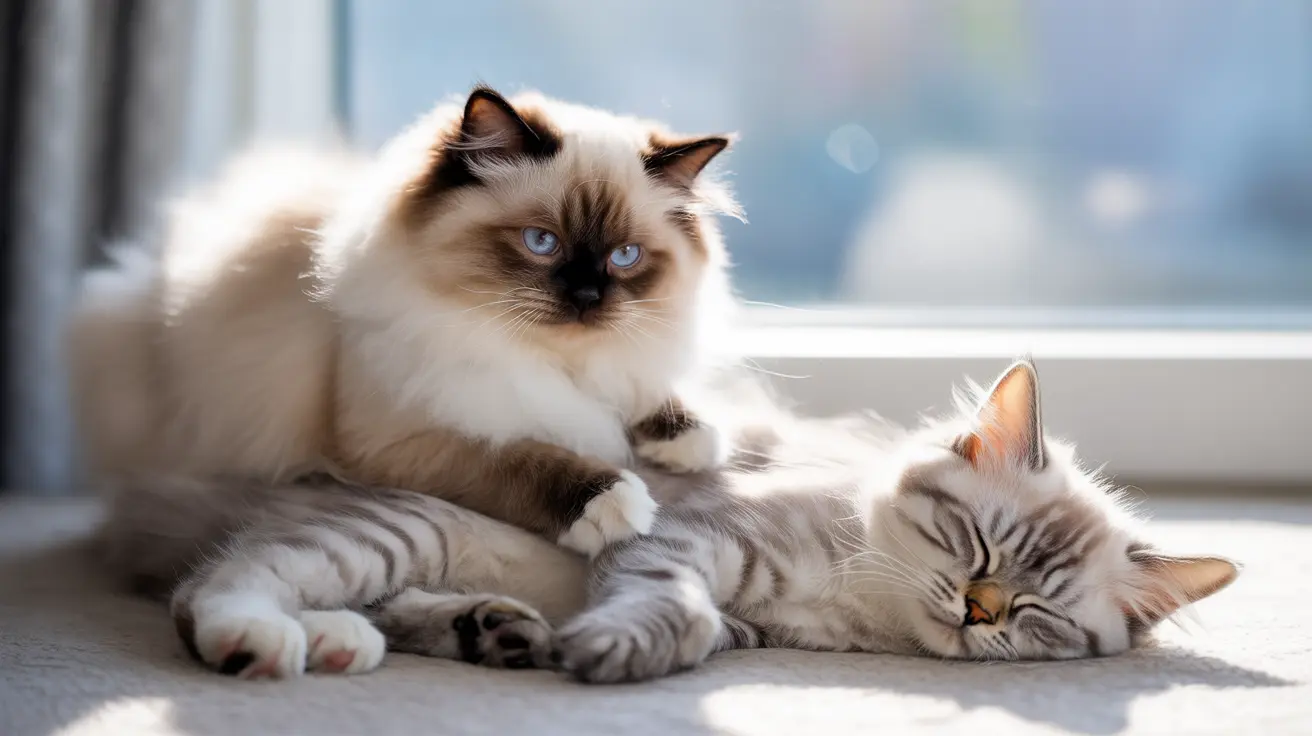The Origins of Cat-to-Cat Kneading
Kneading behavior begins in kittenhood when nursing kittens massage their mother's belly to stimulate milk production. This early association with comfort, nourishment, and maternal bonding creates a lasting impression that carries into adulthood, influencing how cats interact with both their environment and other cats.
Adult cats often maintain this instinctual behavior, applying it to social situations as a way to express comfort and trust. When one cat kneads another, they're essentially recreating those early moments of security and contentment.
Social Bonding Through Kneading
When cats knead other cats, it's primarily an expression of social bonding and trust. This behavior typically occurs between cats who are already comfortable with each other and share a close relationship. You might observe this especially among:
- Littermates who have grown up together
- Long-term feline housemates
- Cats with strong friendship bonds
- Mother cats and their grown offspring
The Emotional Significance of Cat Kneading
Kneading between cats serves as a powerful emotional communicator. When one cat kneads another, they're usually expressing:
- Deep trust and comfort
- Contentment and happiness
- Social acceptance
- Emotional security
- Stress relief
When to Monitor Kneading Behavior
While kneading is generally positive, certain situations warrant attention:
- If one cat shows signs of discomfort
- When kneading becomes excessive or obsessive
- If the behavior leads to aggression
- When accompanied by unusual vocalizations
The Role of Scent Marking
Cat paws contain scent glands, and kneading releases these scents. However, when cats knead other cats, this is typically more about social bonding than territorial marking. The scent exchange during kneading helps reinforce their social connection and group identity.
Physical and Health Benefits
Cat-to-cat kneading can provide several benefits:
- Stress reduction for both cats
- Physical exercise
- Emotional regulation
- Social bond strengthening
- Muscle relaxation
Frequently Asked Questions
Why do cats knead other cats and what does it mean?
Cats knead other cats primarily as a sign of affection, trust, and social bonding. This behavior stems from kittenhood nursing experiences and serves as a way to express comfort and emotional connection in adult cats.
Is kneading between cats a sign of affection or territorial behavior?
While cats' paws do contain scent glands, kneading between cats is predominantly a sign of affection rather than territorial marking. It's a social behavior that strengthens bonds between cats who are comfortable with each other.
How can I tell if my cat is kneading another cat out of comfort or stress?
Look for relaxed body language, purring, and gentle movements to indicate comfort. Signs of stress might include tense posture, tail twitching, or the recipient cat trying to move away. Happy kneading is usually accompanied by peaceful expressions and relaxed muscles.
Should I intervene if my cats knead each other too much or seem uncomfortable?
Only intervene if one cat shows clear signs of distress or if the behavior becomes aggressive. Most cat-to-cat kneading is harmless and self-regulating, but if one cat seems uncomfortable, gentle distraction can help redirect the behavior.
What are the origins of kneading behavior in cats and why do adult cats still do it?
Kneading originates from nursing behavior in kittens, who massage their mother's belly to stimulate milk production. Adult cats continue this behavior because it's associated with comfort, security, and positive emotions from kittenhood. It serves as both a self-soothing mechanism and a way to express contentment and affection.
Understanding why cats knead other cats helps us appreciate the complexity of feline social relationships and emotional expression. This natural behavior showcases the deep bonds that can form between cats and highlights the importance of allowing them to express their instinctual behaviors in safe and comfortable ways.






